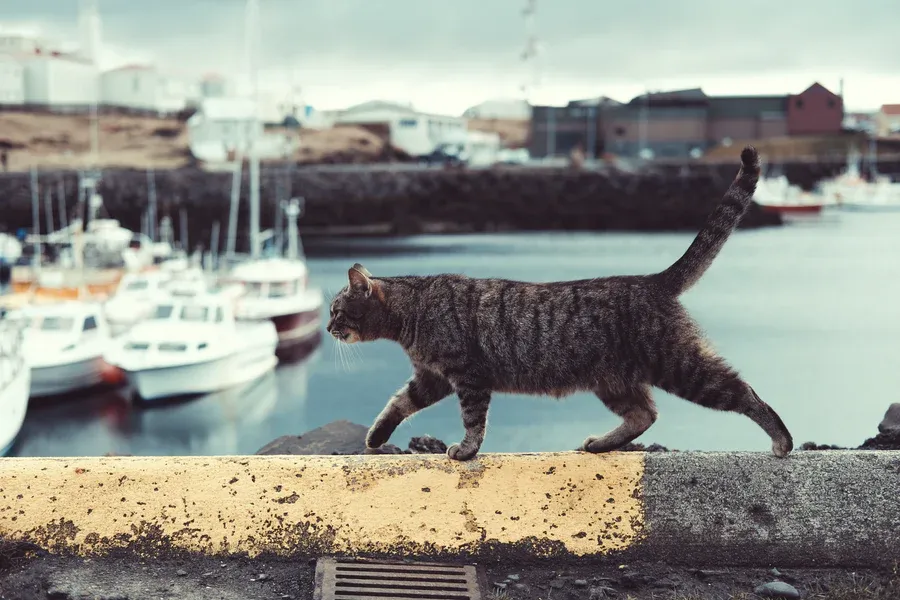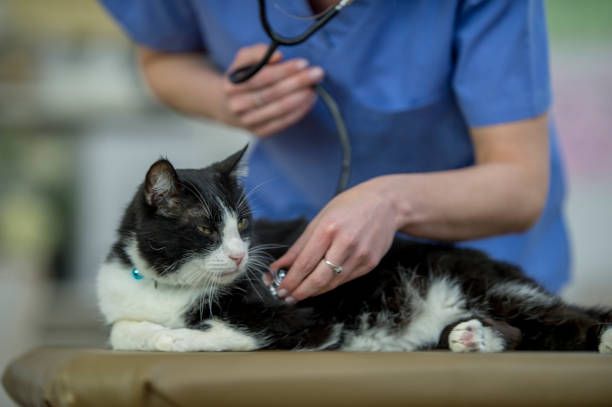Everything You Need to Know About Cat Hemorrhoids and Rectal Prolapse
The swollen veins around the anus area are called hemorrhoids. Hemorrhoid is a disease straining the discretion and results in blue or purple veins. Surgery is necessary if there is the death of tissue or if the live tissues can't relocate through the rectum.

Page Contents
Identification: Cat Hemorrhoids and Rectal Prolapse
The swollen veins around the anus area are called hemorrhoids. They might be unpleasant, painful, and even result in rectal bleeding. Hemorrhoids are a part of our natural state, but it is not a big problem. Yet, they only exhibit bothersome symptoms when they swell and dilate. Hemorrhoid is a disease straining the discretion and results in blue or purple veins.
Unlike humans, cats do not get the same hemorrhoids as humans do. Hemorrhoids occur in the inner layer of the bowel near the anus. However, the rectums that protrude through the anus are known as rectal prolapse. It locates higher up within the body. Many intestinal, anorectal, or urinary conditions can result in prolapse. Cats with chronic diarrhea or frequent urination straining will most likely get rectal prolapse. Your cat might show discomfort through their cries or unusual behaviors.
Symptoms
Hemorrhoids and rectal prolapse have very similar symptoms. Cats with hemorrhoids and rectal prolapses can't move comfortably and may not want to move around much. Your cat might lick, bite, and groom the anus area more frequently than usual due to the uncomfortable itching. They cry out for help to strain while or after taking a dump and have blood in their stools. They could also have trouble sitting and have their attention closely to the anus area and the base of their tails. Paying close attention to the color of the rectum is essential because the red color shows a problem. If they don't treat properly, the skin in their anus turns blue or purple, which resembles hemorrhoids.
Causes of Hemorrhoids and Rectal Prolapse in Cats
Cats have two glands which are the anal sacs located beside the anus. This infection on anal sacs causes the skin around the anus area of the cat to swell with blue veins and even bleeding. Cats use their anal glands to create a stinky fluid to mark their territory. This fluid secretion often comes out when the cat is taking a dump. Since the glands are close to the anus, the dirtiest part of the body, the germs from the anus can enter the sac and create infection if the glands do not clean. Since there are infections from the bacteria, veins around the anus of the cat expand. Thus, the blue and purple veins will eventually burst, forming a bloody stoma next to the anus. However, some people mistake it for hemorrhoids because of its look. Also, the glands near the anus could clog up, creating a heavy muscle straining and causing the stagnant fluids, which eventually make an infestation. If this occurs, the cat might get a fever and be terribly in pain.
Furthermore, rectal prolapse develops when cats get constipation, heavy straining while peeing, having diarrhea, rectal or vaginal mass, and giving birth. The inflammation is a condition that causes skin irritation and anus abscesses. It occurs in long-haired cats, who might get excrement on their long fur. The skin becomes irritated and inflamed if the feces did not clean up from that area.
Rectal Prolapse Diagnosed in Cat
Rectal prolapse and hemorrhoids in cats are diagnosed with a physical examination by vets. Most cats already have a complete prolapse rectum once the vets diagnose it. The vets will determine if there is an underlying cause such as intestinal parasites, rectal masses, stenosis of the rectum, or an enlarged prostate. The vets also examine a stool sample to check for parasites. The vets should check up on the cats with bloodwork and x-rays of the abdomen.
Treatment and Recovery

You can treat the affected anal sacs by having the veterinarians extract the sacs. Veterinarians will squeeze out the impacted anal sac manually with the help of softening agent if the sac is too dry. Cat owners should give antibiotics to their pets if an infection is present. Giving fibers to the cat is advised to help them increase their feces secretion and empty their bowels. If the infected anal sacs keep on recurrence and do not go away, performing surgery is recommended to remove the sacs permanently. The veterinarian will probably advise feeding your cat with insoluble fibrous food and a stool softener to facilitate excretion. In addition, you should give your cat anti-inflammatory drugs or topical lotions to ease the discomfort, swelling, and itching. If your cat has persistent anal gland issues, it would be beneficial to learn how to express your cat's glands at home or to discuss surgical alternatives with your veterinarian.
The crucial component of treatment is locating and removing the source of prolapse. While the cat is anesthetized, the veterinarian could frequently physically treat small or partial prolapses. For example, the vet should stitch up the anus for five to seven days to prevent the rectal prolapse. Surgery is necessary if there is the death of tissue or if the live tissues cannot relocate through the rectum. Following treatment, the owners should feed them with a moist diet and a stool softener. Any other cure needed for diarrhea that appears soon after surgery should be discussed with your veterinarian to prevent severe consequences.
Prevention
You can help your cat from getting infected with hemorrhoids and rectal prolapse. First, you can trim their furs or at least clear out the bottom area because this will prevent feces from sticking to the long hair around the anus and could develop into the fecal mat. Next, you can help them clean out their bottom and pay special care to their buttock when they have diarrhea. All in all, owners should bring their cats to the veterinarian if their cats have the symptoms mentioned above. Antibiotics and painkillers are the most likely prescribed medication for hemorrhoids in cats. If cats do not treat quickly, the infected area might cause severe pain and lead to bleeding.
- Adopt These Poor Babies from These Animal Rescue Centers!
- Best 11 Essential Items for Your Pet Care
- What Makes a Hairless Cat Different from Other Cats?
